After leaving Korea, the 1st Cavalry Division was no longer a conventional infantry unit, the division had become an air assault division as the 1st Cavalry Division (Airmobile), commonly referred to as the 1st Air Cav. The use of helicopters on such a large scale as troop carriers, cargo lift ships, medevacs, and aerial rocket artillery, was never before implemented, but by doing so it freed the infantry from the tyranny of terrain to attack the enemy at the time and place of their choosing. In 1965, colors and subordinate unit designations of the 1st Cavalry Division were transferred from Korea to Fort Benning, Georgia, where they were used to reflag the existing 11th Air Assault Division (Test) into 1st Cavalry Division Airmobile. Concurrently, the colors and subordinate unit designations were transferred to Korea to reflag what had been the 1st Cavalry Division into the 2nd Infantry Division.
Shortly thereafter, the 1st Cavalry Division Airmobile began deploying to Camp Radcliff, An Khe, Vietnam, in the Central Highlands and was equipped with the new M16 rifle, the UH-1 troop carrier helicopter, the AH-1 attack helicopter, the CH-47 Chinook cargo helicopter, and the massive CH-54 Skycrane cargo helicopter. All aircraft carried insignia to indicate their battalion and company.
A UH-1D helicopter climbs skyward after discharging a load of US infantrymen
Bell AH-1G over Vietnam (Cobra)
Troops unload from a CH-47 helicopter in the Cay Giep Mountains, Vietnam, 1967.
The division’s first major operation was to help relieve the Siege of Plei Me near Pleiku and the pursuit of the retreating North Vietnamese Army which culminated in the Battle of Ia Drang, described in the book We Were Soldiers Once…And Young was also the basis of the film We Were Soldiers. Because of that battle, the division earned the Presidential Unit Citation (US), the first unit to receive such in the war. 1967 was then spent conducting Operation Pershing, a large-scale search and destroy operation of enemy base areas in II Corps in which 5,400 enemy soldiers were killed and 2,000 captured. In Operation Jeb Stuart, January 1968, the division moved north to Camp Evans, north of Hue and on to Landing Zone Sharon and Landing Zone Betty, south of Quang Tri City, all in the I Corps Tactical Zone.
January 27, 1968. 1st Cavalry Division LRP at LZ Betty prelude to Tet.
In the early morning hours of January 31, 1968, the largest battle of the Vietnam War, the Tet Offensive, was launched by 84,000 enemy soldiers across South Vietnam. In the 1st Cavalry Division’s area of operation, the North Vietnamese Army (NVA) and Vietcong forces seized most of the city of Hu?. As the 3rd Brigade, 1st Cavalry Division fought to cut off enemy reinforcements pouring into Hue, at Quang Tri City, five enemy battalions, most from the 324th NVA Division, attacked the city and LZ Betty (Headquarters 1st Brigade). To stop allied troops from intervening, three other enemy infantry battalions deployed as blocking forces, all supported by a 122mm-rocket battalion and two heavy-weapons companies armed with 82mm mortars and 75mm recoilless rifles. After intense fighting, 900 NVA and Vietcong soldiers were killed in and around Quang Tri City and LZ Betty. However, across South Vietnam, 1,000 Americans, 2,100 ARVNs, 14,000 civilians, and 32,000 NVA and Vietcong lay dead.
In March 1968 the 1st Cavalry Division shifted forces to LZ Stud, the staging area for Operation Pegasus to break the siege of the Marine combat base at Khe Sanh—the second largest battle of the war. All three brigades participated in this vast airmobile operation, along with a Marine armor thrust. US Air Force B-52s alone dropped more than 75,000 tons of bombs on North Vietnamese soldiers from the 304th and 325th Divisions encroaching the combat base in trenches. As these two elite enemy divisions, with history at Dien Bien Phu and the Ia Drang Valley, depleted, the 1st Cavalry Division (Airmobile) leapfrogged west, clearing Route 9, until at 0:800 hours April 8, the 2nd Battalion, 7th Cavalry, linked-up with Marines at the combat base, ending the 77-day siege.
On April 19, 1968, as the LRPs on Signal Hill directing artillery on enemy trucks in A Shau Valley below
On April 19, 1968, as the 2nd Brigade continued pushing west to the Laotian border, the 1st and 3rd Brigades (about 11,000 men and 300 helicopters) swung southwest and air assaulted A Shau Valley, commencing Operation Delaware. The North Vietnamese Army was a very well-trained, equipped, and led force. They turned A Shau into a formidable sanctuary —complete with PT76 tanks; powerful crew-served 37mm antiaircraft cannons, some radar controlled; twin-barreled 23mm cannons; and scores of 12.7mm heavy machine guns. A daring long-range penetration operation was launched by members of the 1st Cavalry Division (Airmobile)’s, long-range reconnaissance patrol, against the North Vietnamese Army when they seized “Signal Hill” the name attributed to the peak of Dong Re Lao Mountain, a densely forested 4,879-foot mountain, midway in the valley, so the 1st and 3rd Brigades, slugging it out hidden deep behind the mountains, could communicate with Camp Evans near the coast or with approaching aircraft.
Despite hundreds of B-52 and jet airstrikes in Operation Delaware, the enemy shot down a C-130, a CH-54, two Chinooks, and nearly two dozen UH-1 Hueys. Many more were lost in accidents or damaged by ground fire. The division also suffered more than 100 dead and 530 wounded in the operation. Bad weather aggravated the loss by causing delays in troop movements, allowing a substantial number of NVA to escape to safety in Laos. Still, the NVA lost more than 800 dead, a tank, 70 trucks, two bulldozers, 30 flamethrowers, thousands of rifles and machine guns, and dozens of anti-aircraft canons. They also lost tons of ammunition and explosives, medical supplies and foodstuffs.
July 1968. Two 1st Cavalry Division LRP teams, Quang Tri, Vietnam
First Cav shoulder patch
Here come the Air Cav
Charles Duval ( Actor ) Apocalypse Now
” Bounty Hunter ” E TRP 1-7 CAV
Here’s to the Cobra Pilots
1st Cavalry Division The 1st Team
In mid-May 1968 Operation Delaware ceased, however, the division continued tactical operations in I Corps as well as local pacification and “medcap” (medical outreach programs to local Vietnamese). In the autumn of 1968, the 1st Cavalry Division relocated south to Phuc Vinh Base Camp northwest of Saigon. In May 1970, the 1st Cavalry Division participated in the Cambodian Incursion, withdrawing from Cambodia on 29 June. Thereafter, the division took a defensive posture while US troop withdrawals continued from Vietnam. On 29 April 1971, the bulk of the division was withdrawn to Fort Hood, Texas, but its 3rd Brigade remained as one of the final two major US ground combat units in Vietnam, departing on 29 June 1972. However, its 1st Battalion, 7th Cavalry, Task Force Garry Owen, remained another two months.
Loach
Cobra and a Huey
Here are some videos for your enjoyment:
This article was written by Commander Web and originally appeared on May 11, 2015 in the newsletter of the Museum of Military Memorabilia at Naples Army Airfield, Naples Florida. Click the following link to read through the many published articles on that website: http://naplesmuseummilitaryhistory.org/author/davidcollins
Thank you for taking the time to read this. Should you have a question or comment about this article, then scroll down to the comment section below to leave your response.
If you want to learn more about the Vietnam War and its Warriors, then subscribe to this blog and get notified by email or your feed reader every time a new story, picture, video or changes occur on this website – the button is located at the top right of this page.
I’ve also created a poll to help identify my website audience – before leaving, can you please click HERE and choose the one item best describing you. Thank you in advance!

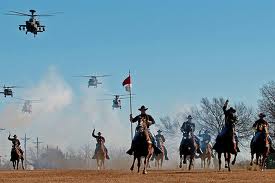



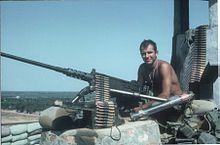
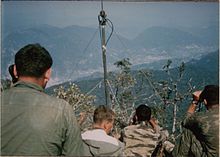









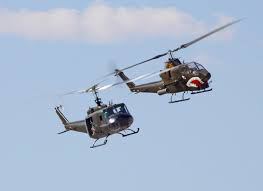


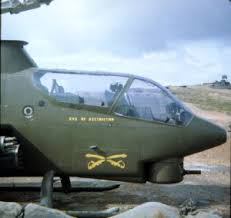


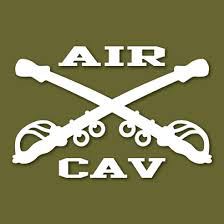




Great, short description of the Cavs involvement in Vietnam. My 55+ days in May/June, 1970, in Cambodia has not been recognized as the battles described in this article. I was a 12B assigned to grunt units.
Combat engineers fought alongside the grunts in every operation. I have read several books on the Cambodia invasion. None of the books have done justice to Cambodia operation.
LikeLiked by 1 person
I was lucky to have a smart CO and LT’s that were not dangerous” Gung Ho “officers that exposed their men to stupid tactics..I’m not saying Moore was but I’ve seen things…Galloway is another questionable issue.. but it’s over and done with now. Bravo Co. 1/12th 1st. Air Cav. 10/68-10/69 “It Don’t Mean Nothin”
I am blessed and very lucky 🍀 to be here..God bless us..Bob Quinn
LikeLiked by 1 person
My brother, SSG James Spriggs was in1/8 from 8/68 to8/69, 1st Air Cav. He received 2 purple hearts, bronze star, air medal, combat infantryman badge. Less than 2 years out of Viet Nam he was tragically killed in a truck accident in Mo.
LikeLiked by 1 person
41st AD M55 QUADS 67 68 1st cav never a thing about us
LikeLiked by 1 person
Phuc Vinh was located about 75 miles north west of Saigon, not north east. I was there with the 1/9 Cav.
LikeLiked by 1 person
Thanks. I made the correction. / John
On Sat, Apr 9, 2022 at 11:33 AM CherriesWriter – Vietnam War website wrote:
>
LikeLiked by 1 person
Correct. Our AO was the Parrot’s Beak, Angel’s Wing and Fishhook locations, where Cambodia cut into South Vietnam. C-1/7, Jul’69-Sep’70.
LikeLiked by 1 person
Great article on the 1st Cavalry
Did they go back to I Corps after
their time in the Cambodian Operation?
or did they remain in 2 Corps?
LikeLiked by 1 person
We Were Soldiers Once and Young is Fiction. as to Hal G. Moore ,Joe Lee Galloway ,Jack P. Smith,Vincent Cantu,Larry Gwin, George Forrest.
Joe Lee Galloway no DEGREE, in Journalism.
In a letter to Hal G. Moore, Joe Lee Galloway wrote.
from Hal Moore A Soldier ……Once and Always by MIKE GUARDIA page 171-172
BUT, JOE LEE GALLOWAY’S TRUE FEELING ABOUT THE VIETNAM VETERAN.
” Damed if I’d want to go for a walk in the sun with them.”
“Black GI’s going thru long involved black power identification rituals.”
“THE REST ARE JUST COMMITTING SUICIDE.”
Here dead we lie
Because we did not choose
To live and shame the land
from which we sprung
Life to be sure
Joe Lee Galloway was not at Plei Me,l but did fly over the camp on the 24 Oct.1965
Joe Lee Galloway did not rescue Jimmy D. Nakayama or James Clark, they walked to the aid station under their own power, aided by other troops.
Joe Lee Galloway did load two troops on the Huey when he was ask to help by a Medic.
Joe Lee Galloway “I would later learn his name was Jimmy D. Nakayama.”
in some of Joe Lee Galloway’s stories, he would write that Cathy was Jimmy’s wife, when her name was Trudy.
Jimmy Nakayma died in flight,3 degree burns no other injuries. ie Crushed ankle.
The Troops who did help Jimmy D. Nakayama and James Clark, Not Joe Lee Galloway!
Arturo Villarreal · Sidney Lanier High School
Sp4 James Clark was not given any morphine by the medics. He came running towards my foxhole with his clothes on fire. I helped putting the fire out and I just gave him some saline solution. I took him to the CP and ask the doctor to give him something for the terrible pain, but the doctor told that they didn’t have anything to give him and he just told me to just keep giving him the saline solution.
++After some time pass, some helicopters landed and I put him aboard one of them.
https://www.victoriaadvocate.com/counties/calhoun/ia-drang-veterans-recall-bloody-battle/article_c7f979ea-4bd8-5260-88ca-1776a88f03cb.html
Nov. 14-18, 1965< this would be LZ X-Ray's battle
Robert Saucedo should have been leaving the war. Instead, he was riding in the 16th helicopter in a formation high above the jungle on its way to the Ia Drang Valley.
Jimmy Nakayma died in flight,3 degree burns no other injuries. ie Crushed ankle.
"On the second day, they dropped a couple of napalms in the (landing zone), and a couple of guys bringing in choppers – the engineers – they got burned," he said with eyes distant.
++"They ran to our foxholes. We treated them for burns."
++"We treated him for burns. His face was on fire. His weapon was on fire," he said. "It was bad."
Joe Lee Galloway did not rescue Jimmy Nakayama! Joe Lee Galloway did help load a w burned trooper into the Huey.
But only after Joe Lee Galloway, was ask to help, by a Medic.
No crushed ankle,torn skin! Joe Lee Galloway was one of 4 persons to carry a burned troop to the Huey.
https://www.historynet.com/ia-drang-where-battlefield-losses-convinced-ho-giap-and-mcnamara-the-u-s-could-never-win.htm
Ia Drang – The Battle That Convinced Ho Chi Minh He Could Win
Joseph L. Galloway
So, even before Ia Drang, you were having doubts?
"No, it didn’t take Ia Drang to convince me that we didn’t have enough force to counter a
guerrilla force the size of the Viet Cong, never mind the NVA."
Joe Lee Galloway was not with Col. Brown, when Joe Lee Galloway saw the Skyradier crash.
Joe Lee Galloway was with Gen Knowles, when they flew over LZ X-Ray.
Joe Lee Galloway was with most of the day, 14th Nov 1965 at noon.
Joe Lee Galloway "I speak for the Vietnam Veteran."
Joe Lee Galloway " THIS WAR WE CAN'T WIN" March 1965 with the Marines ,I was(disabused )
of that notion pretty early on with the( Marines.)
disabuse = Free from Error, Fallacy or Misconception.
JOE LEE GALLOWAY two faced.
Joe Lee Galloway " This war we can’t win."
worked for UPI. . I thought, “ This war we can’t win."
http://www.historynet.com/interview-joe-galloway-soldiers-reporter-speaks-his-mind.htm
Interview with Joe Galloway: Soldier’s Reporter Speaks His Mind
BY VIETNAM MAGAZINE
4/18/2011 • VIETNAM FIRST PERSON, VIETNAM WAR
The Marines landed in March 1965, and they had to start shuffling people in, and I came along a few weeks later, in April.
How long before reality set in?
I was disabused of that notion pretty early on with the Marines.
lzalbny65@aol.com
IF YOU WANT A GOOD FIGHT… Original story of Vietnam . By Joe Lee Galloway
Which became We Were Soldiers Once and Young.
https://docplayer.net/51922376-If-you-want-a-good-fight.html
From Brian Siddall airborne in normandy
Contact BN Siddall @
Tel: (315) 567-4542
Airborne In Normandy Research
PO Box 3897
Ithaca, NY 14852
Send an e-mail atresearcher@airborneinnormandy.com
Click to access galloway_101_and_napalm_1965_01_16.pdf
http://www.airborneinnormandy.com/galloway_fraudulent_bronze_star.htm
Joseph Lee Galloway's original story of Landing Zone X-RAY Nov,14-16, 1965
Twenty JAMESTOWN ( N.Y. ) POST- JOURNAL- Wednesday Evening,November 17,1965
WOUNDED SOLDIER LOSES HALF HIS PLATOON IN BITTER CHU PONG FRAY
By JOSEPH GALLOWAY
Chu Pong Mountain, South Viet Nam ( UPI )—- The soldiers eyes were red from loss of sleep, and maybe a bit
from crying too, now that it was all over.
A three-day growth of beard stubbled his cheeks. But was hard to see because of the dirt. He was hurt, in terrible
pain, but you'd never know it. Slivers of shrapnel had ripped his chest and spared his leg.
He sat on the landing zone below the Chu Pong mountain where more Americans had died than ever before in
a battle against Communists in a war over Viet Nam. He had gone through hell — three days of it— and still a
bit dazed, more from lack of sleep then his wounds, though. When I walked up to him, he spoke, But not to me
in particular, nor to the other guys sitting around sipping the first hot cup of coffee they had since the fight
began.
Loses a Friend
" I took care of 14 of 'em myself," He said. "They were tough little bastards. You had to shoot them to pieces
before they quit coming . . . just rip them apart."
I squatted on my heels waiting for him to say more, But he didn't. Somebody told me he had lost half of his
platoon, including a friend he had served with for more than eight years. "What is his name?" I ask.
" It's not important," the sergeant slouching nearby said. "He's just one of us and he did a damn good job."
Everyone did a damn good job. And nobody knew it better than Gen. Knowles, task force commander and
deputy commander of the 1st Air Cavalry.
"These men were just great," he told me. "They were absolutely tremendous. I've never seen a better job
anywhere, anytime,"
Back From Battle
Monday another American soldier walked out of the jungle into the valley of death. Bullets whizzed over his
head and kicked up dirt at his feet.
" Get down you fool!" We shouted.
The GI kept walking, He carried no weapon, He walked straight and tall.
A mortar shell exploded nearby, He didn't waver, Shrapnel chopped off branches above my head. But the
American out there in the open came on until he was within a few feet of the battalion command bunker. He
looked funny, dazed.
Then we knew, he was shell shocked. He paused for a moment and looked around. He recognized the aid
station set up under the trees and walked toward it.
Just as the soldier reached the station he slumped to his knees, then pitched forward on his face, That is when
we saw his back for the first time.
It wasn't pretty, It had been blown open by a communist mortar.
Medics were unable to reach the soldier because of the almost solid wall of communist bullets and jagged steel
fragments coming from the jungle. So he walked out, The bullets and mortar did not bother him anymore, He
had his.
Veterans Cried
The men of the U.S. 1st Air Cavalry fought like heroes. They died the same way, Some took their wounds
without a whimper. Seasoned Veterans cried.
Col. Hal Moore of Bardstown, Ky., the commanding officer of the 7th Battalion, 1st cavalry, Came over to me,
tears streaming down his face, His men were catching from the slopes of this mountain range less than five
miles from the Cambodian border.
I'm kind of emotional about this, so excuse me," Moore said to me. "But I want you to tell the American people
that these men are fighters.
"Look at them."
Moore pointed to a Negro soldier lying in the shade of a tree. A Communist bullet had torn a huge hole in his
stomach. The soldier had his hands over the wound. You could see him bite his lip. He was in terrific pain, But
he made no whimper as he waited for a medical helicopter.
" Look at them," Moore said again. " They're great and the American people ought to know it."
WAR "ACCIDENT"
It was shortly after 8:30 a.m. Monday when one of those terrible accidents of war happened.
I was sitting in the command bunker, A mound of dirt screening us from the communist snipers, looking at the
wounded in the aid station just a few yards away.
Suddenly, I felt a searing heat on my face.
An American fighter-bomber had misjudged the Communist positions, and dropped a load of napalm. The
flaming jelly gasoline, impossible to shake or scrape off once it hits skin, splashed along the ground in a huge
dragon's tail of fire less then 25 yards away.
Screams penetrated the roar of the flames. two Americans stumbled out of the inferno. Their hair burned off in
an instant. their clothes were incinerated.
" Good God!" Moore cried. Another plane was making a run over the same area. The colonel grabbed a radio.
" You're dropping napalm on us!" he shouted. " Stop those damn planes."
At almost the last second, the second plane pulled up and away, its napalm tanks still hanging from the wings.
It was an hour before a medical helicopter could get into the area and tend to the two burned men. One GI was
a huge mass of blisters, the other not quite so bad. Somehow his legs had escaped the flames. But he had
breathed fire into his lungs and he wheezed for air.
A MEDIC ASK ME TO HELP GET THE MEN INTO THE HELICOPTER WHEN IT ARRIVED. THERE WERE
NO LITTERS. TENDERLY, WE PICKED THE SOLDIERS UP. I HELD A LEG OF THE MOST SERIOUSLY
BURNED MAN. I WASN'T TENDER ENOUGH. A BIG PATCH OF BURNED SKIN CAME OFF IN MY HAND.
VC BATTALIONS
Chu Pong Mountain rises 2,500 feet from the valley below. From the top, you could almost lob a mortar shell
into Cambodia. The mountain slope were heavily jungled. And they hid at least two battalions of North
Vietnamese Army regulars—- possibly the same troops who pinned down two companies of air cavalrymen not
far away about a week ago.
The cavalry were looking for them, spoiling for a fight. They found the Communist Monday and dropped by
helicopter into a small landing zone about the size of a football field at the base of the mountain on the valley
floor.
One platoon got about 300 yards up the mountain before the Communist opened up. From Behind, cut it off
and fired on the main cavalry force from three sides with small arms, heavy machine-guns, and mortars.
Time and again, the cavalrymen tried to move in and help the platoon' pull back, It was futile. The fire was to
heavy. The platoon spent the night on the mountainside. Their losses were heavy, but the damage to the
Communist was said to be heavier.
"We got 70 communist bodies stacked up in front of our positions," the platoon leader radioed back Monday.
Men Dying
It was shortly before noon Sunday when the cavalrymen swept down in the area about 12 miles west of Pleiku.
Ever since the nine day battle around the Special Forces camp at Plei Me, the cavalrymen have been
sweeping the jungles and running into sporadic contact with hard-core Communist units.
Brig. Gen. Richard Knowles, deputy commander of the air cavalry division, OFFERED ME A RIDE IN HIS
HELICOPTER.
WE CIRCLED OVER THE BATTLE GROUND. Air strikes went in below us. An American A1E skyraider was hit
on a low- level bombing run, and the pilot had no chance to bail out. The plane crashed and exploded in a
cluster of trees.
Men are dying down there, but they are doing their job. "This is good," Knowles said." This is what we came for.
We've got a U.S. battalion well -equipped down there."
Many Dead
I got my chance to join the men on the ground about 8 P.M. I went with a helicopter loaded with supplies and
ammunition.
we were level with the middle of the mountain and in the darkness we could see the muzzle flashes of rifles
and machine-gun spitting bullets at us. I said a prayer.
Sgt.Maj. Basil Plumley of Columbus, Ga., met us at the landing zone, and led me back to Col. Moore's
command bunker.
" Watch your step," Plumley said, " There were dead people, all over here." They were dead Americans many
wrapped in ponchos.
At Day break Monday, Medical helicopters began landing and taking off again with the wounded.
A detail was assign the job of collecting weapons and ammunition from the wounded before they were
evacuated.
Jimmy D. Nakayama's casualty report no crushed ankles!
Joe Lee Galloway
FICTION: "I don’t know what got into me, but I ran into the fire.
I grabbed the feet of this kid, and as I pulled him up his boots crumbled and the skin over
his ankle bones sloughed off.
I could feel those bones in the palms of my hands."
Jimmy D. Nakayama's casualty report no Crushed ankles
lzalbny65@aol.com
IF YOU WANT A GOOD FIGHT… Original story of Vietnam . By Joe Lee Galloway
Which became We Were Soldiers Once and Young.
https://docplayer.net/51922376-If-you-want-a-good-fight.html
From Brian Siddall airborne in normandy
Contact BN Siddall @
Tel: (315) 567-4542
Airborne In Normandy Research
PO Box 3897
Ithaca, NY 14852
Send an e-mail atresearcher@airborneinnormandy.com
Click to access galloway_101_and_napalm_1965_01_16.pdf
http://www.airborneinnormandy.com/galloway_fraudulent_bronze_star.htm
LikeLike
The article is really well written and even remembered that the 1st Cav owned the A Shaw. I was a bit surprised to see that, yet again, the 11th Avn Gp Pathfinders , 1st Air Cav are completely left out. We didrn’t belong to any one particular unit, we worked with them all. I can not be more proud of the guys I got to work with, both fellow Pathfinders, and the infantry units. I was lucky enough to experience that time serving with hero’s. WELCOME HOME, BROTHERS !!! Pathfinders, first in, last out.
LikeLiked by 1 person
The article is really well written and even remembered that the 1st Cav owned the A Shaw. I was a bit surprised to see that, yet again, the 11th Avn Gp Pathfinders , 1st Air Cav are completely left out. We didn’t belong to any one particular unit, we worked with them all. I can not be more proud of the guys I got to work with, both fellow Pathfinders, and the infantry units. I was lucky enough to experience that time serving with hero’s. WELCOME HOME, BROTHERS !!! Pathfinders, first in, last out.
LikeLike
The actor is Robert Duvall. Not Charles Duvall.
LikeLiked by 1 person
I deployed with the advance party of the First Air Cav and air assaulted into An Khe on 26 August 1965. We did not get AH-1 aircraft until 1967. Our gunship was the UH-1D. Also, the division was formed out of the assets of the 11th Air Assault AND the Second Infantry Division, less such troops and equipment not compatible with an air assault division. Thus the Second ID shed its tanks, all artillery heavier than 105mm, trucks larger than 3/4 ton, etc. We wound up with 8 infantry battalions (9 were authorized) but that required opening the stockades throughout the CONUS to allow those infantrymen convicted of minor offenses–AWOL, petty theft, etc,, to volunteer for duty in Vietnam. We got our 9th battalion, the 5/7 Cavalry, in June 1966.
LikeLiked by 2 people
1st Air Cavalry, Yes I was in the 1/12th Bravo company. I joined the Cav. up in An Khe and then flew up to Camp Evans for some training before I met my unit in Quan Tri, LZ Sharon.
We then moved to Song Be, Quan Loi, An Loc and Loc Ninh.
We were in the jungle (bush) 26-28 days a month walking from 5-10 klicks a day . We seemed to get into contact with the NVA almost daily and take casualties. I was one of the lucky ones to make it “back to the world”. (home)
They would put us in front of NVA regiments of about five hundred . We operated along and “in” Cambodia .
Operating around Tay Ninh and Phouc Vinh also.
After 28 days or so we were rotated to Forward Firebase’s for some clean clothes and hot meals maybe a cold beer too. There we would put us on the green line ( bunkers on the perimeter of the fire base. LZ Grant was one but I don’t recall the other ones.
This is what it was like in the Infantry with the 1st Cav.
Very truly yours,
Bob Quinn 1/12th Bravo Co. 2nd platoon Vietnam 10/68-10/69
PS I have a picture or two I would like to post it can’t figure out how .
LikeLiked by 2 people
I was with 1st 12th c co airborne 66 -67 was on lz bird when we were over run 12-27 66.
LikeLiked by 1 person
Very interesting. I have a friend living in the local area who was with the Air Cav at Ia Drang. He was wounded in that fight but survived. His name is Sgt Don Campbell.
LikeLiked by 2 people
Very well said. I was in CO A 1/8th Cav. 1st Air Cav Div 67-68 . I was there when the C -130 went down. God bless those men on that plane
LikeLiked by 2 people
Was in B 1/8 in the A Shau do remember the C 130 going down.
LikeLiked by 1 person
Good Read about your area’s of operations in country. My hat’s off.
LikeLiked by 1 person
I liked the article. There should have been mention of the 227th and 229th Assault Helicopters Battalions and the 228th Assault Support Helicopter Battalion. I was a member of 229th AHB from February 1967 until April 1969 and when we moved South out of I Corps we operated out of Tay Ninh along with The Tropic Lightening 25th Infantry Division.
LikeLiked by 1 person
i liked it except there is no mention of the 2nd brigade and its operations, ( i was in the the second brigade so i know we did something,)
LikeLiked by 1 person
Eddie – I just want to say thank you. Everything yall went through, it ain’t been forgotten . I respect you guys and I wish the best for you and your family. Happy Christmas, bro.
LikeLiked by 1 person
The same thoughts go out to all the others posting here and to every other Vietnam Vet. No better men have ever lived. Happy Christmas and best wishes for 2020 to all you guys.
LikeLiked by 1 person
ROBERT Duval….. Excellent article!!
LikeLiked by 1 person